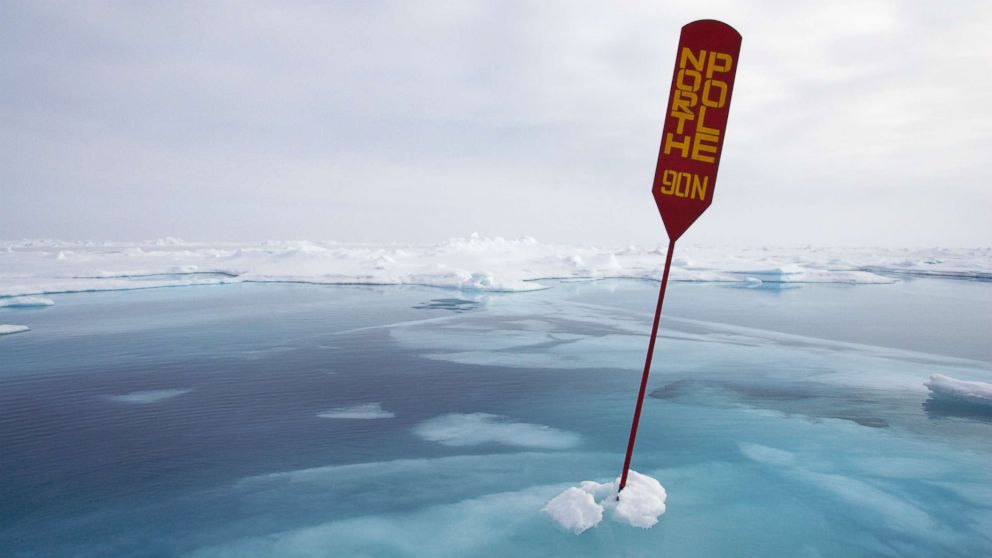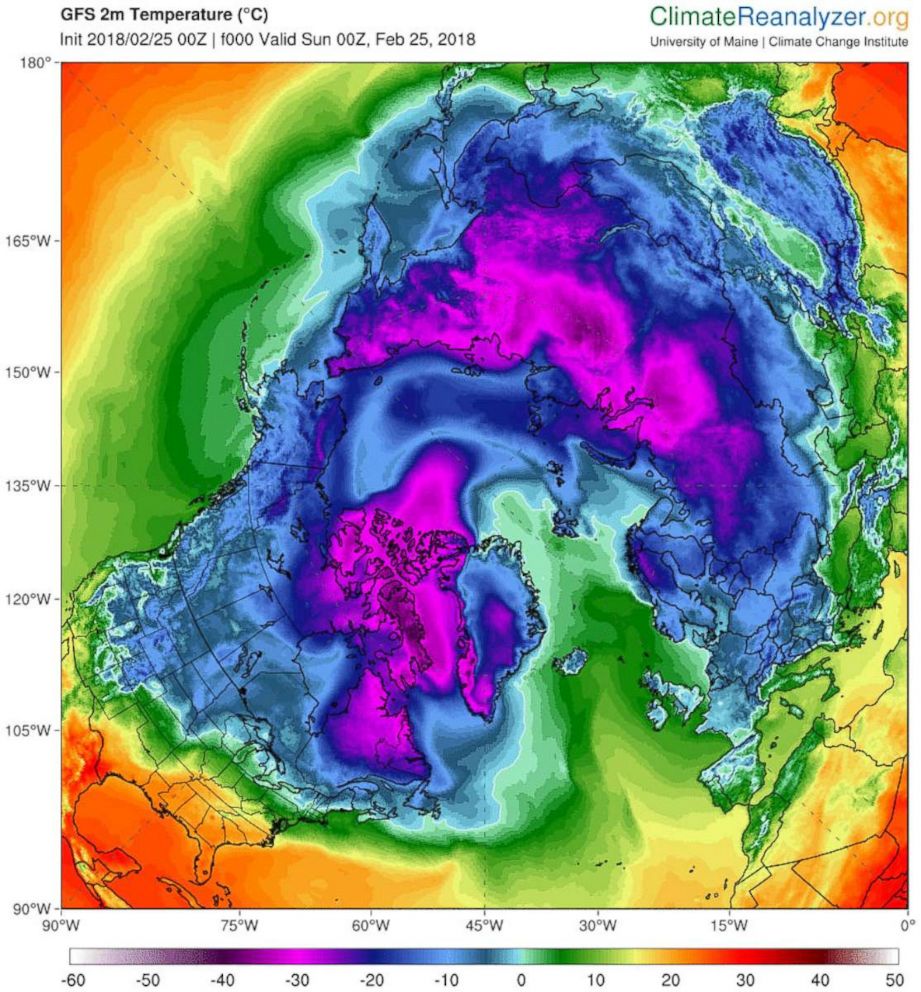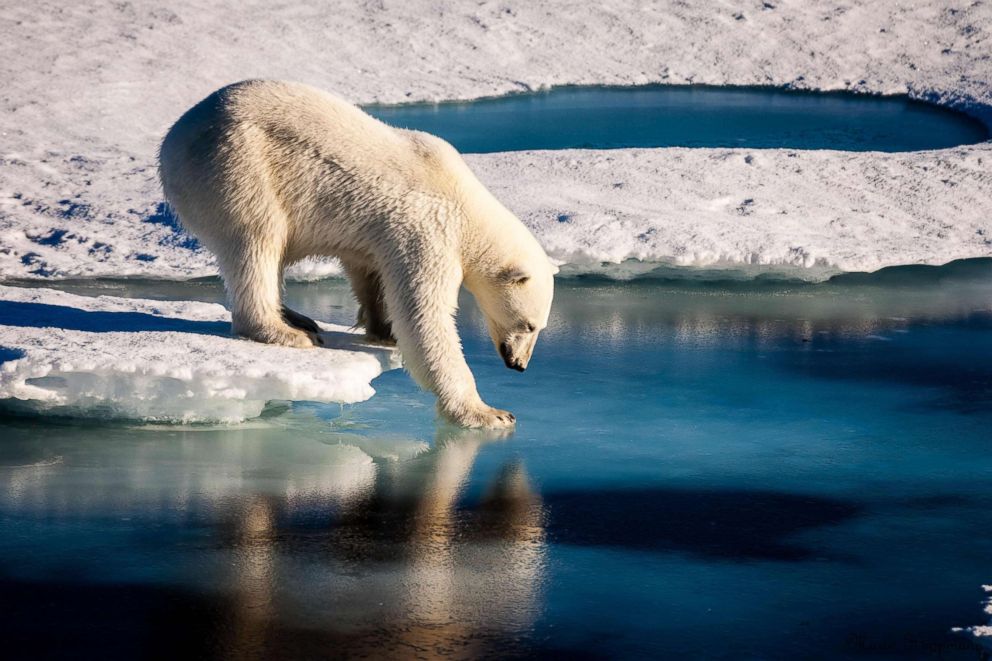North Pole warms to stunningly high mid-30s this month, alarming experts
This is not an isolated incident, concerned scientists say.

— -- North Pole temperatures appeared to reach the melting point of 32 degrees Sunday, a surprising high that exceeds the norm for this time of year by more than 50 degrees, according to researchers.
The Feb. 25 spike stemmed from a large storm that tracked north along the east coast of Greenland, climate scientist Robert Graham of the Norwegian Polar Institute told ABC News today via email.
The storm created strong winds that carried moist and warm air to the Arctic Ocean and North Pole region.
This is not an isolated incident, climate scientist Zack Labe of the University of California-Irvine tweeted Sunday, saying the relatively warm weather in the North Pole has been the norm this year.
“2018 is well exceeding previous years for the month of February,” Labe said in the tweet. “While this is one particular extreme weather event, the long-term trend in the Arctic indicates rising ocean and air temperatures.”
As for whether the Feb. 25 reading was a historical record, scientist Graham told ABC News, “We do not have the data to answer that question. I think December 2015 was also a very strong contender.”


But he did say with certainty that warmer temperatures stem from the area’s increasing number of winter storms.
Each storm brings strong winds that transport warm air to the Arctic, he added
“These storms are preventing the Arctic from growing during the winter,” Graham said. “This makes it easy for the sea ice to melt in summer.”
The biggest concern, Graham said, is that such changes in the Arctic may eventually lead to rising sea levels and more threatening storms in the southern regions.



